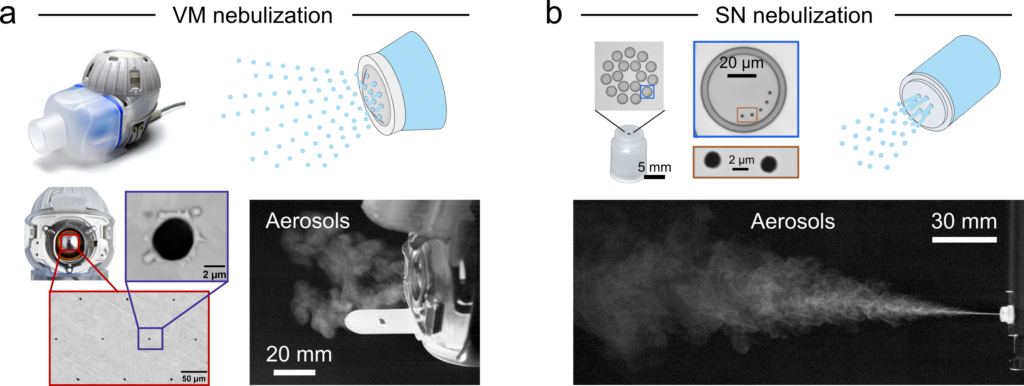
Figure: (a) A vibrating mesh nebulization. Aerosols are generated through high frequency vibrating the membrane on which there are many micro-holes. (b) A soft nozzle nebulization technique. This approach is passive requiring mechanical squeezing liquid through micro-nozzles.
Inhaled aerosols via nebulization offer a promising, noninvasive method for delivering lung drugs, particularly to improve lung mechanics in premature neonates with respiratory distress syndrome. However, the high shear forces in conventional nebulization is highly detrimental to many complex biopharmaceuticals like lung surfactant. This study reports a novel soft nebulization technique with low shear energy, which can significantly preserve the structural integrity of lung surfactant, resulting in dynamic responses similar to the native surfactant. Results reveal that initial spreading dynamics at the air-liquid interface are driven by the Marangoni effect, followed by the transformation of lamellar body-like configuration to reduce surface tension. Surfactant depletion at the interface during area oscillation is susceptible to the compression amplitude. These findings provide insights for enhancing inhaled lung drug delivery and designing more effective synthetic lung drugs for treating pulmonary diseases.
Collaboration:
– University of Amsterdam: Prof. Cees van Rijn and Prof. Daniel Bonn.
– Amsterdam University Medical Center: Dr. W. Onland and Prof. A. H. van Kaam
Publication:
- K. Xie, T. Varkevisser, A. Deblais, W. Onland, A. H. van Kaam, D. Bonn and Cees J. M. van Rijn. Preserving the Surface Activity of Lung Surfactant Using Soft Nebulization. Small Science (2025): 2400639.
